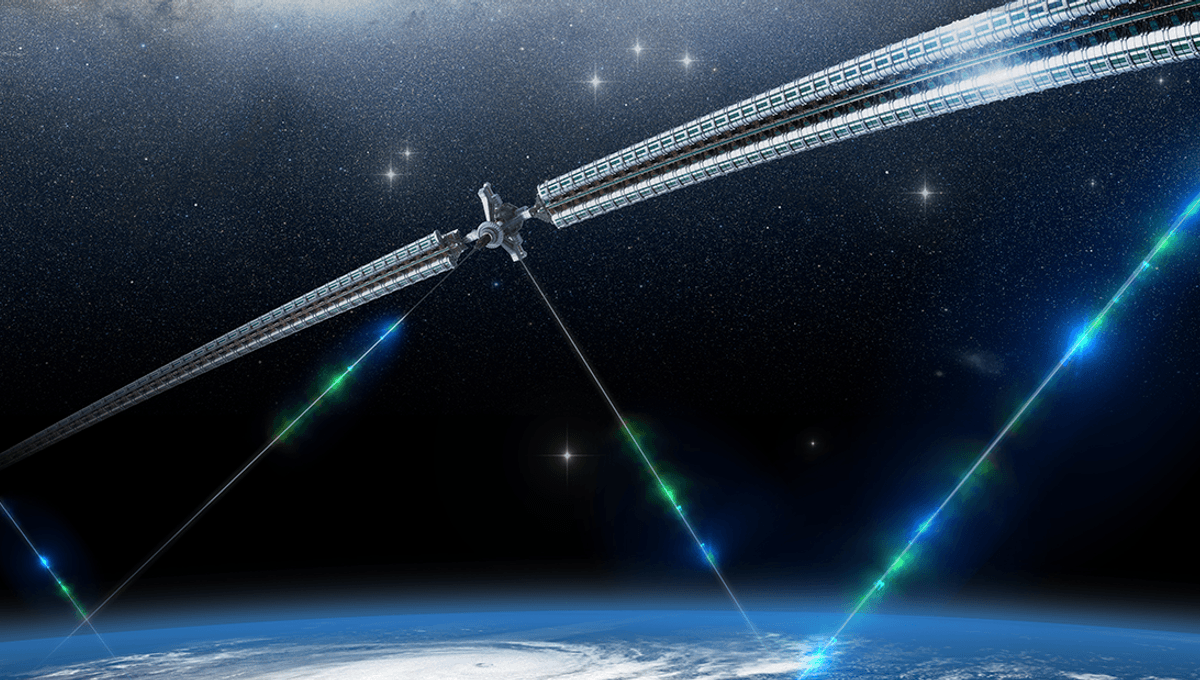
The US Military’s Defense Advanced Research Projects Agency (DARPA) is attempting to develop and grow large-scale “biomechanical” structures in space.
ADVERTISEMENT
DARPA, known for its somewhat quirky development projects, has put out a call for the development of large structures that can be “grown” in space.
“Given recent advances in metabolic engineering for rapid growth, extremophiles with novel properties, biological self-assembly properties of tunable materials, and emergent mechanical design principles of biological systems, DARPA is interested in exploring the feasibility of ‘growing’ biological structures of unprecedented size in microgravity,” the agency explained in a recent Request for Information.
“Some examples of structures that could be biologically manufactured and assembled, but that may be infeasible to produce traditionally, include tethers for a space elevator, grid-nets for orbital debris remediation, kilometer-scale interferometers for radio science, new self-assembled wings of a commercial space station for hosting additional payloads, or on-demand production of patch materials to adhere and repair micrometeorite damage.”
The organization explains that the advantage of making these structures in space is that it would significantly reduce the cost of launching them up there via rockets. While they note biological growth mechanisms are unlikely to be of much use on their own, and more hardy materials are necessary, they believe that creating hardy, load-bearing materials could be achieved through marrying mechanical, structural, and biological engineering.
“A relevant analogy is that of a tent. Given the structural material of the tent poles, biological growth mechanisms are envisioned to be the ‘cover’ of the tent. The tent can be shaped a particular way by the underlying poles, and when embedded with appropriate electronics, perform a given function,” according to DARPA.
“The key value proposition for spaceflight would be a favorable ratio between the mass and/or volume of traditional (non-biological) materials versus in-situ grown biological materials. Maximizing this value proposition requires co-engineering between the structural/mechanical and the biological to arrive at useful structures.”
ADVERTISEMENT
The idea, like pretty much everything DARPA suggests, is pretty out there and speculative. Engineering of this kind is not something we’re going to achieve anytime soon. Projects like this have been dreamed about for some time, but are not close to fruition.
The space elevator they mention, for example, was first proposed in 1975. This involves attaching a long cable to the Earth, and the other end to a counterweight – whether a satellite or a space station – way up in geostationary orbit, keeping the cable tense.
“The fixed position of the geostationary satellite with respect to the ground lends itself to more than an electromagnetic signal connecting it to the Earth. If a physical connection could be made between the geostationary satellite and the ground, it would allow vertical ascent by powered capsules up this ‘orbital tower’ directly into geostationary orbit,” engineer and space scientist Jerome Pearson explained of the concept in the paper that introduced it.
“These capsules would be safer than rockets; in case of power failure, they could clamp onto the tower until repairs could be made. Satellites could be recovered by allowing them to slide down the tower to the ground. This method of returning satellites to the Earth would allow the recovery of their excess energy now wasted by heat shields. The use of this energy could greatly decrease the cost of launching satellites.”
ADVERTISEMENT
As mentioned above, these concepts are fun but still very much within the realms of sci-fi. While it’s a cool idea to have bio-mechanical nets gathering up space debris, there are other problems to overcome before we go space fishing. For example, biological life relies heavily on gravity for a sense of direction.
“Controlling this artificially – especially without gravity, which many life forms rely on to determine a direction – is still difficult,” Nils Averesch at the University of Florida told New Scientist. “Even if directionality of growth could be controlled also in microgravity, the space environment is incompatible with biological activity.”
DARPA has invited respondents to submit ideas for what structures could be made, as well as proposals for proof-of-concept experiments here on Earth. While it’s possible this could be the beginning of a new sci-fi era of space elevators and giant bio-mechanical radio telescopes, we wouldn’t hold our breath just yet.
Source Link: USA's DARPA Wants To "Grow" Gigantic Biomechanical Structures In Space